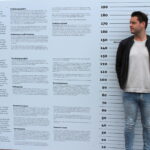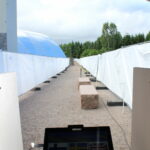15.7.2019
New research shows that by 100 meters eye-witness identification is mere guesswork
A recent study from Åbo Akademi University in Finland shows that eye-witnesses cannot reliably identify persons they have seen from a distance of 100 meters. Already at a distance of 40 meters, accurate eye-witness identifications are unlikely. The study is the first to investigate eye-witness identifications at such high distances. The findings are particularly important in legal cases where eye-witness identifications are used and suggests that lineup identifications based on witnessing a perpetrator from far should be given little weight in court rulings.
In a study published in the leading journal Law and Human Behavior, the authors present evidence of an upper distance threshold of 100 meters for correct eyewitness identifications. They also found that already at 40 meters accuracy had fallen by 50%, demonstrating a dramatic effect of increased distance on eyewitness identifications.
“Our findings have important implications. We are the first to show that when someone views a stranger and then tries to identify that person in a lineup there is a distance where accuracy becomes so low that it is the same as guessing. We also presented participants with real people, a clear improvement compared to most earlier studies that have used photographs or videos.”, says Thomas Nyman, leading author of the publication.
In the study, participants aged 6–77 were presented with four people, one at a time, without any distractions. The distances varied and could be between 5–110 meters. Directly after observing a person, participants tried to identify the person they had just seen from a lineup of photos. They could also choose say that none of the photos represented the person they had seen.
“Importantly our results do not indicate that all identifications are accurate below 100 meters. We found that accuracy fell drastically with increased distance, and past 40 meters the accuracy is questionable at best.
“As there were no distractions in our study, the threshold may be much lower than 100 meters in real-life cases where other factors, such as low light or masking worn by the perpetrator, negatively affect identification accuracy”, Nyman continues.
This study was conducted at the Heureka Science Center in Vantaa, Finland by a research group led by Adjunct Professor Julia Korkman and funded by the Academy of Finland (project number 299577). The study is part of Thomas Nyman’s PhD-thesis on the perceptual limits of eye-witness identifications. The study is the result of a collaborative effort between Åbo Akademi University, the University of Arkansas, and New York University, Shanghai.
Link to the on-line publication: https://psycnet.apa.org/record/2019-38765-001
For more information:
PhD student in Psychology at Åbo Akademi University
Thomas Nyman
Phone: +358 40 557 7041
Email: thomas.nyman@abo.fi
Images


